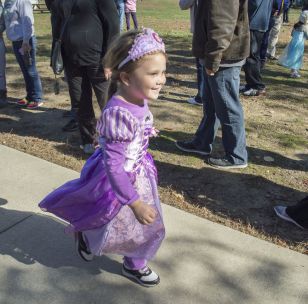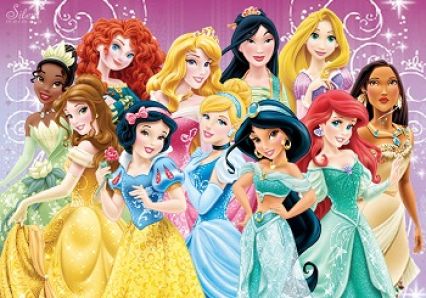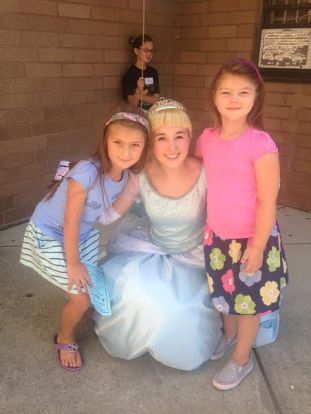Fans of the beloved Disney princesses have been swooning over tales of happily ever after for decades now.
The fascination with these fictional ladies dates back to 1937, when Snow White first danced onto the big screen with her seven dwarves and charming prince.
However, almost 80 years later, young girls have lost some interest in the more classic princesses and have found a new love for the modern go-getters Disney has been releasing over the last couple of years.

Rather than singing the romantic tunes of “Someday My Prince Will Come,” young girls can be found belting out the fierce lyrics of “Let It Go.”
From 1937 until about 2012, Disney had been delivering the same message.
Young, dainty girl meets the man of her dreams. He saves her from her melancholy life and fights all of her battles. Then, they live happily ever after.
With the same message being repeated over and over again, researchers have been taking a closer look at the possibility that these classic films could be doing more harm than good for their young target audiences.
What raises the most speculation and concern is the overall images that these princesses portray.
All ranging somewhere between the ages of 14-19, each princess has eyes that are bigger than her waistline, unrealistically small feet and a protruding bust line.

If young girls feel self-conscious about their body, as so many do, what is watching an unrealistically small figured princess going to do for their self-image?
Most likely, nothing good.
Natalie Trerotola, junior elementary and special education major, loves the movies and the princesses, but believes that they could send mixed messages, especially to young girls.
“I definitely think that the overall look of the Disney princesses could have a negative influence on young girls because of the shape of their bodies and the makeup on their faces,” Trerotola said.
While recognizing the negative aspects, Trerotola believes there could be a lot of positives for young girls as well.
“I feel like the princesses can make girls feel just as beautiful,” Trerotola said. “When a little girl puts on a Cinderella dress, it can make her automatically feel beautiful just like it does for Cinderella.”
Putting the body and beauty image issues aside, researchers have also raised other interesting questions about these leading Disney ladies.
It’s something that may be overlooked by many, but studies are saying that each princess has significantly less talk time than the men in their very own films.
Despite the movie being about the princess, and often times being titled after her, the men somehow seem to dominate the film and talk far more than the princess.
CBS News reported that men spoke around 72 percent of the time in the classic films “Cinderella,” “Snow White” and “Sleeping Beauty.”
Fast-forward to 1989, when Ariel was released and several others, including Belle and Mulan, followed throughout the 1990’s. These ladies continued to stay quiet and allowed their male counterparts to dominate the screen.

The Washington Post found that men spoke 68 percent of the time in “The Little Mermaid”; 71 percent of the time in “Beauty and the Beast”; 77 percent of the time in “Mulan”; and a whopping 90 percent of the time in “Aladdin.”
What does the amount of talk time have to do with any of it?
Well, it follows Disney’s signature “damsel in distress” theme.
Beautiful young girl is basically told to sit back and relax while her man goes out and fights all of her battles. Oh, and she should try and not talk too much.
Focusing on this damsel in distress theme, junior exercise science and health promotion major, Kiley Sharp shared her feelings about these desperate-for-saving ladies.
“I believe these movies definitely give off a sense of dependence for the princesses,” Sharp said. “They are viewed as very fragile and act as though they need to be saved by someone when in reality they could be saving themselves.
Sharp grew up watching these movies and holds a special place in her heart for the princesses, as many college-aged girls do.
“My personal favorite has always been Mulan,” Sharp said. “She’s strong and fends for herself, and in the end she still gets her prince. I think it’s a great example to show girls that they don’t have to be super girly or wear a lot of makeup to get the boy.”
Sharp believes these movies could also put an unnecessary pressure on young girls to find love at an early age.
“I don’t think this is as much of an issue for very little girls because self confidence issues might not be there yet,” Sharp said. “But once they reach that age where self confidence does becomes an issue, then I definitely think it could pose a problem.”
After decades of princesses getting little talk time on screen, giving off unrealistic body types and ideas of love, Disney decided to take an unexpected turn in 2012, with the film “Brave.”

Merida is the fiery red headed star of this film and despite being labeled a princess, is nothing like the ladies who came before her.
Bringing an entirely different message to the Disney screen, Merida is far more interested in archery and horseback riding than the idea of falling in love and getting married.
In fact, Merida has no interest in love at all. She doesn’t wear a big sparkly dress, doesn’t go dancing at a ball and certainly does not get a kiss when the clock strikes midnight.
How could Disney do this? Can there really be a Disney princess without a prince? It seems to go against every message Disney has ever portrayed.
However, the new generations of Disney princess fans seem far more infatuated with the princesses who have strong characteristics, rather than a strong prince by their side.

7-year-old Sara Campbell has loved Merida ever since she first saw the film.
“I like her red curly hair and she’s really brave, just like the movie’s name,” Campbell said. “She rescues people.”
It’s interesting to see a young girl admire a personality trait, rather than a pretty face.
5-year-old Jaylin Schultz has a similar love for Elsa, the snow queen from the 2013 hit “Frozen.”
“I really like her dress, her song and her pretty hair,” Schultz said. “She also doesn’t have a prince and is independent, which I really like.”
Schultz wishes she could be more like Elsa, but does believe the two of them are similar, in a way.
“I think Elsa and I are both beautiful,” Schultz said. “We look alike.”
Clearly, the Disney princesses have a lot of influence over their younger fans.
Princesses like Elsa and Merida are clearly showing how empowering being a woman can be and that a man does not always have to be in the picture.
Younger fans are not the only ones showing their love for Disney’s new powerful leading ladies.
Junior elementary and special education major Cortney Hanson believes the emphasis that these new movies put on family is the best part.
“Movies like “Frozen” and “Brave” show independence and emphasize that the love from your family can be more important than the love from prince charming,” Hanson said. “These movies show young girls that they are in charge of their own fate and that situations are not always fairytale perfect.”
Sharp agrees with Hanson adding that the newer films may add even more magic than the fairytales from the past.
“Young girls can see that it is possible to be independent, fight for themselves and be who they truly are,” Sharp said. “And what’s more magical than that?”




Oh, please. A 5 year old saying she likes Elsa because, “she is independent”, and you use it genuinely in the article as if it isn’t obvious to everyone that she’s been coached to say it.